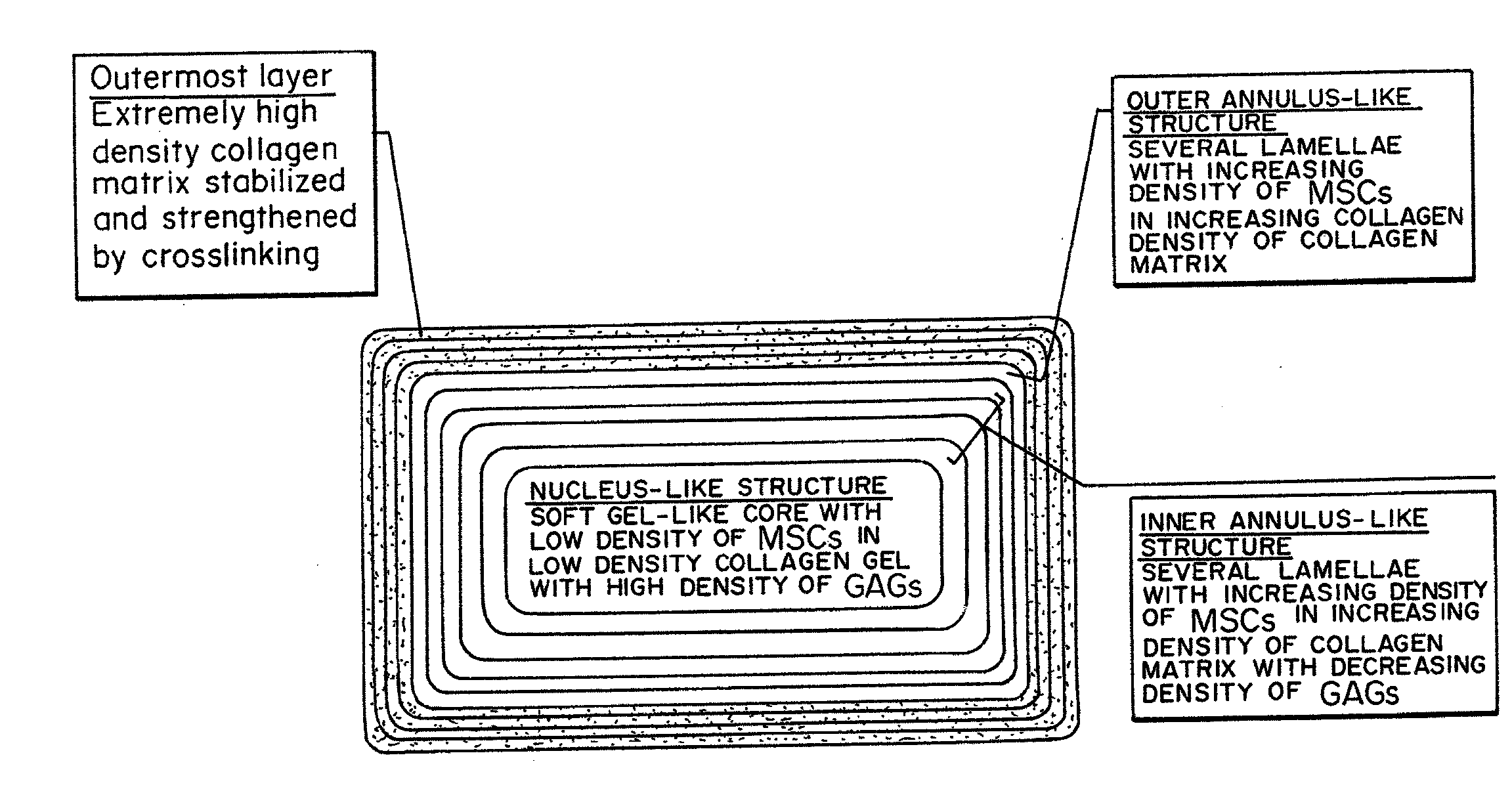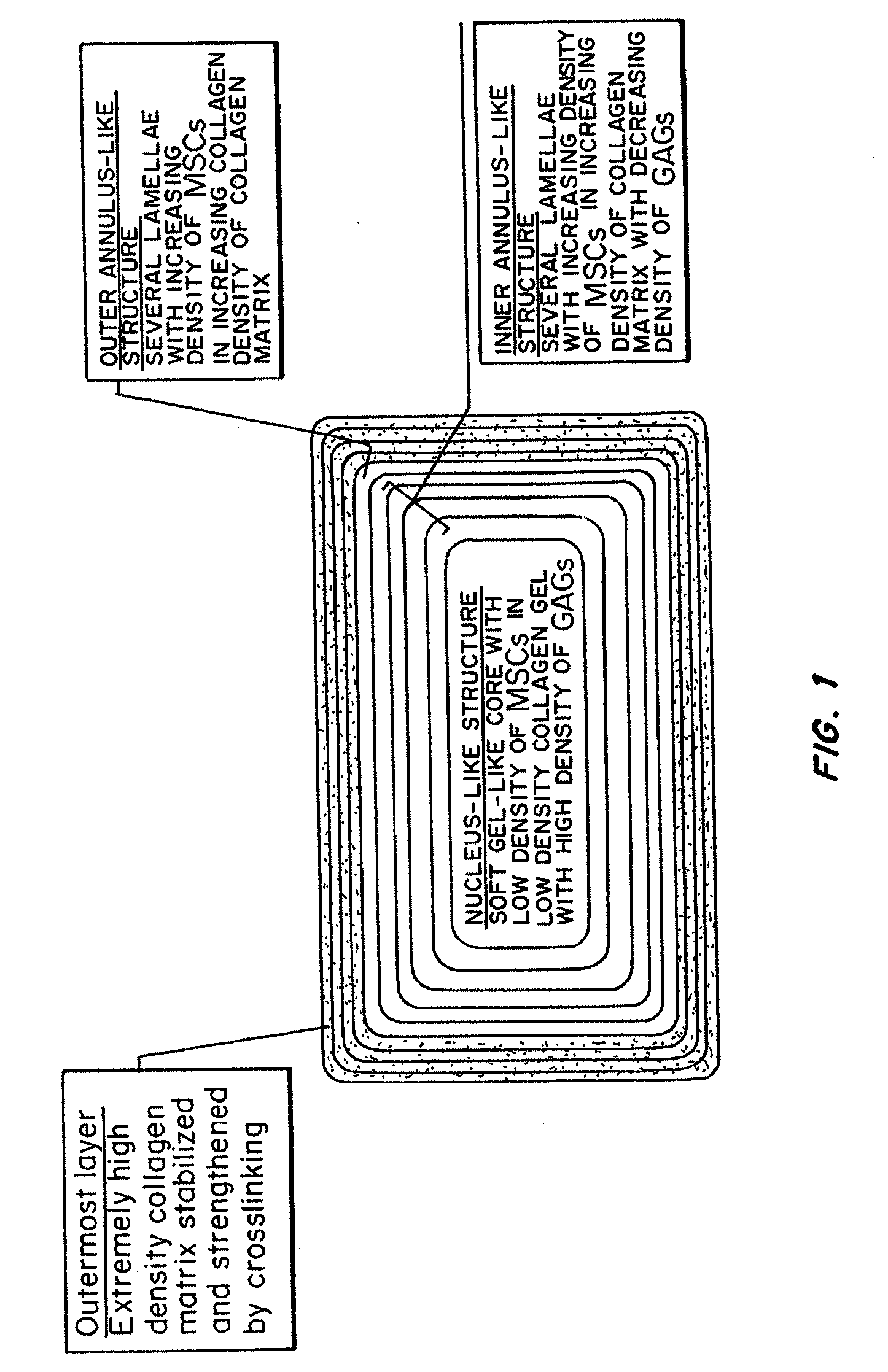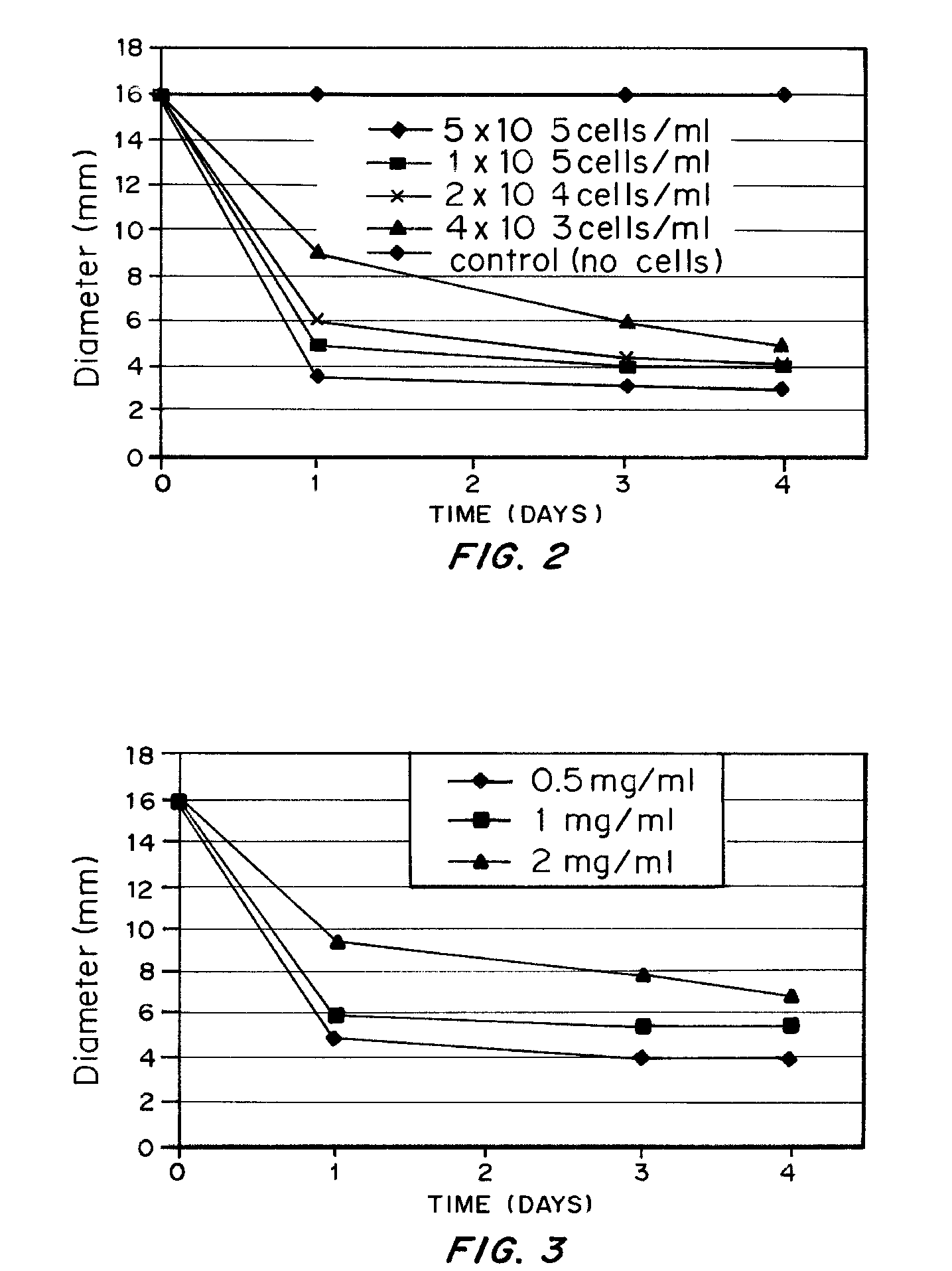Bioengineered Intervertebral Discs and Methods for Their Preparation
a technology of intervertebral discs and bioengineered discs, which is applied in the field of bioengineered intervertebral discs, can solve the problems of limited mobility, low back pain, and less synthesized, and achieve the effects of increasing density and gags, reducing the time of in vitro cell manipulation, and high density
- Summary
- Abstract
- Description
- Claims
- Application Information
AI Technical Summary
Benefits of technology
Problems solved by technology
Method used
Image
Examples
example 1
Encapsulation of MSCs in Collagen Microshperes
[0076] Materials and Methods
[0077] Rattail sollagen solution type I was neutralized and diluted into 0.5 mg / ml in the presence of different concentrations (2×104, 1×105 and 5×105 cells / ml) of human bone marrow derived MSCs in DMEM medium with 10% FBS. The solution was kept at 4° C. in an ice bath before use. A small volume of 5 μl of mixture was dropped onto a non-adhesive substratum using a dispenser. The hMSC containing microdroplets were allowed to reconstitute into microspheres encapsulating the cells by incubating in a 37° C. incubator for 2 hours and were then collected into a DMEM medium containing bath with non-adherent substratum. The collected microcapsules were incubated in 37° C. for three dimensional cultures and the morphological change and the dimensional change of the shperes were recorded for 48 hours before they were ready to be plated onto traditional culture dishes.
[0078] Results
[0079] Microspheres at day 0 showed...
example 2
Three Dimensional Culture of MSCs in Collagen Microcapsules, Outgrowth from the Attached Microcapsules and Replating of the Microcapsules
[0080] Materials and Methods
[0081] hMSCs encapsulated collagen microshperes were plated onto 10 mm diameter culture flask at different densities (50, 125 and 250 microshperes per dish) and incubated for 1-2 hours with 1-2 ml of full medium covering the surface of the dish. Afterwards, the dish was gently filled with 8-9 ml more medium. The microspheres were cultured for 3 days and the morphology of the cells migrating out from the microspheres assessed.
[0082] Results
[0083] Attachment of the microcapsules onto culture flask in necessary for cell outgrowth from the microspheres and depends on the cell density and plating density of the cell-encapsulating collagen microsphere showed similar morphology with spindle and elongates shaped. The hMSC-encapsulated collagen microspheres wer released from the culture dish by flushing with full medium and r...
example 3
Production of MSCs Seeded Collagen Matrix, MSCs Induced Collagen Matrix Contraction; Analysis of the Controlling Parameters of the Extent of Contraction
[0086] Materials and Methods
[0087] Rattail collagen type I solution was neutralized and diluted into concentrations at 0.5, 1 and 2 mg / ml i the presence of rabbit bone marrow derived MSCs at a concentration of 4×103, 2×104, 1×105, 5×105 cells / ml. The collagen MSC mixtures were thoroughly mixed and degassed if necessary and were cast in 4-well plate and incubated for 30 minutes at 37° C. in an incubator the solidified structure was detached from the culture plate by using a sterile pipette tip or a syringe needle without damaging the structure and was transferred into a non-adherent culture dish such as a bacterial culture dish. The dimension of the structure and the morphology of MSCs inside the structure were recorded against time as the index for volume contraction of the structures.
[0088] Results
[0089] Contraction of the colla...
PUM
| Property | Measurement | Unit |
|---|---|---|
| compressive modulus | aaaaa | aaaaa |
| temperatures | aaaaa | aaaaa |
| densities | aaaaa | aaaaa |
Abstract
Description
Claims
Application Information
 Login to View More
Login to View More - R&D
- Intellectual Property
- Life Sciences
- Materials
- Tech Scout
- Unparalleled Data Quality
- Higher Quality Content
- 60% Fewer Hallucinations
Browse by: Latest US Patents, China's latest patents, Technical Efficacy Thesaurus, Application Domain, Technology Topic, Popular Technical Reports.
© 2025 PatSnap. All rights reserved.Legal|Privacy policy|Modern Slavery Act Transparency Statement|Sitemap|About US| Contact US: help@patsnap.com



